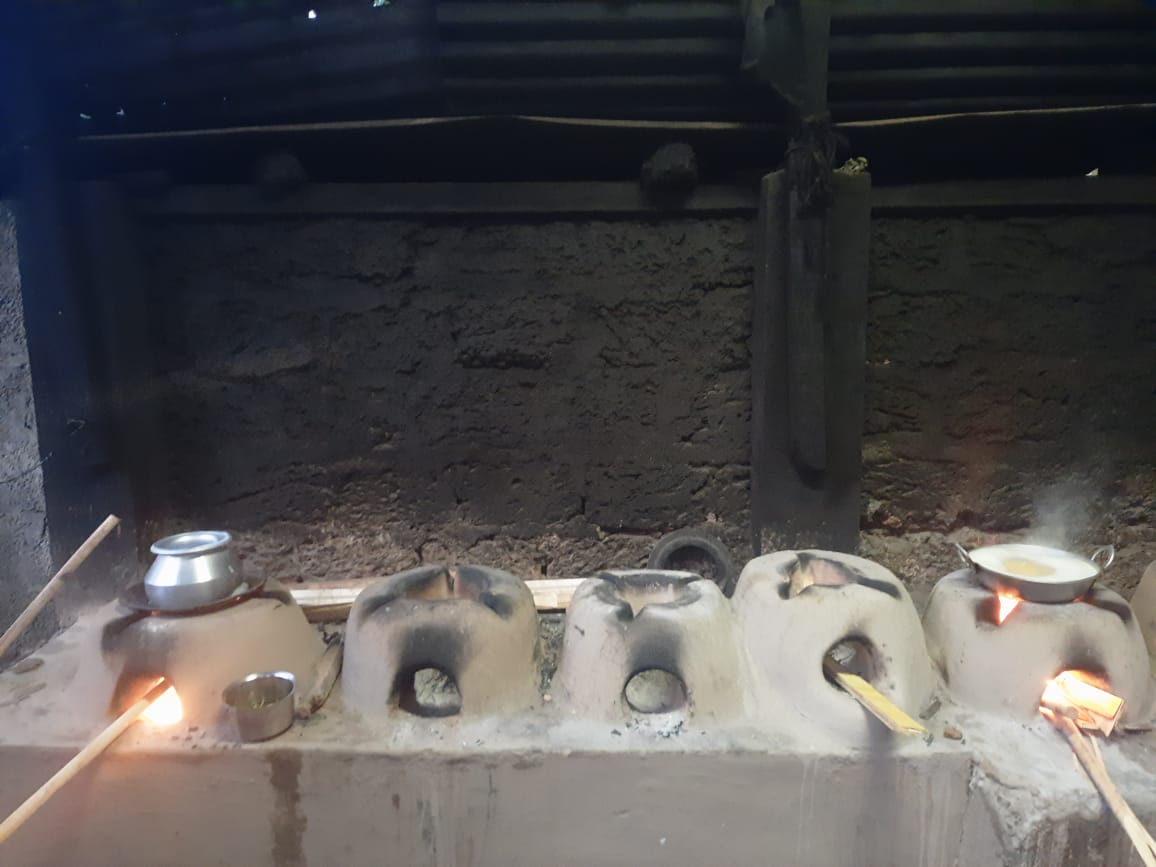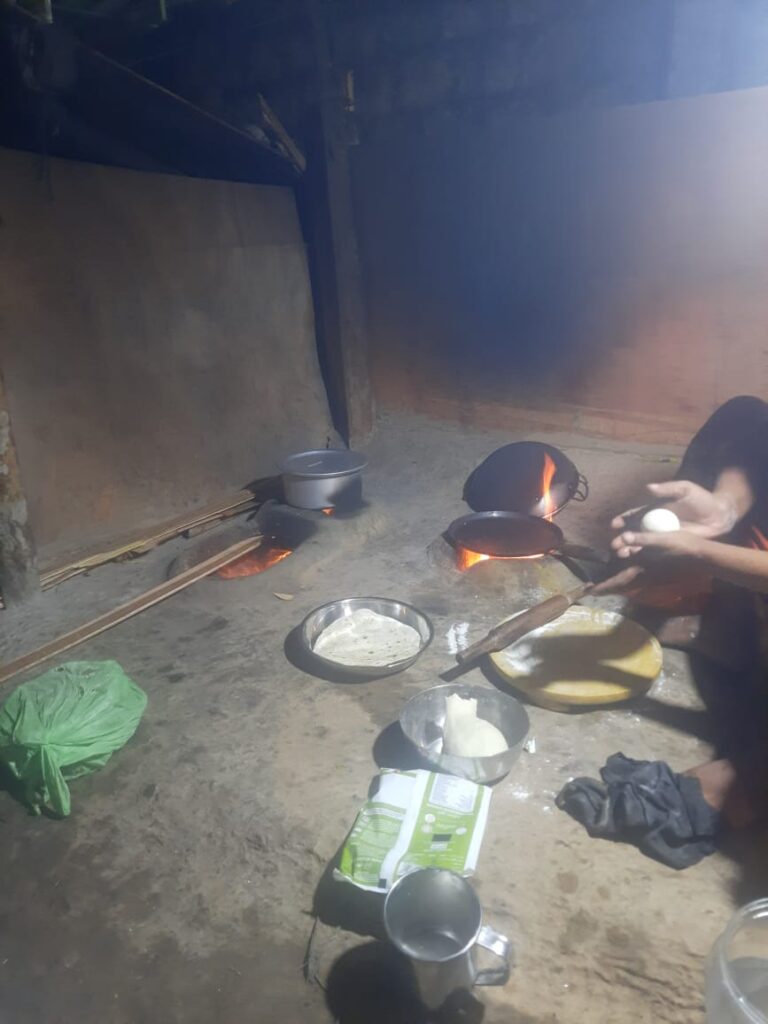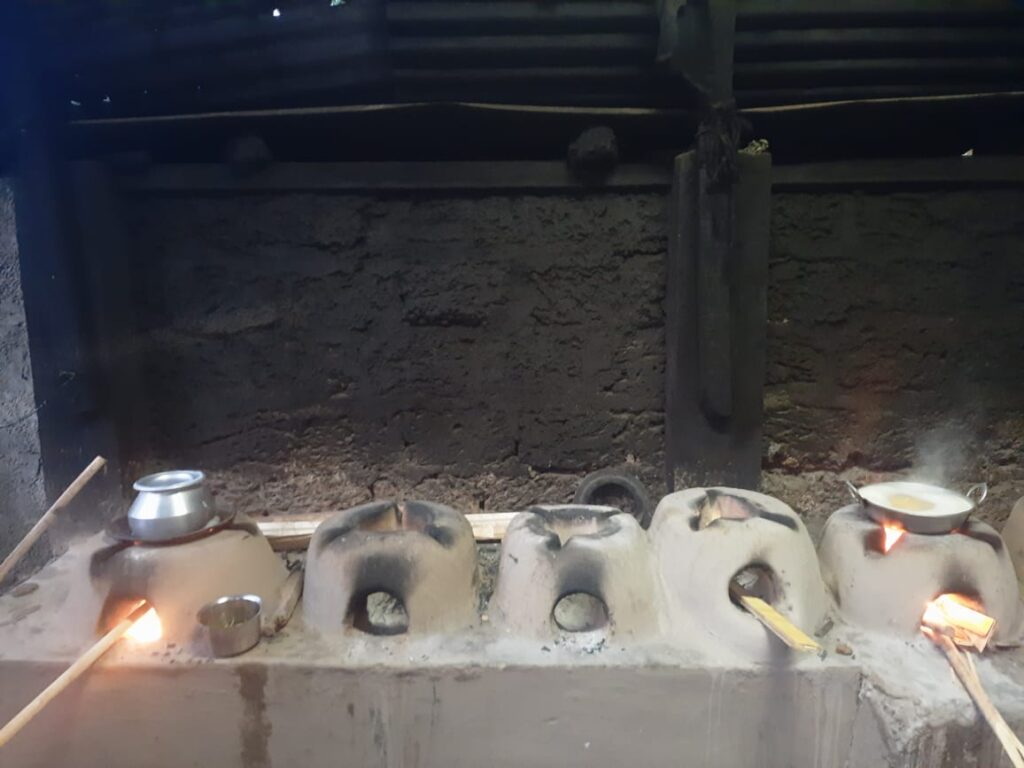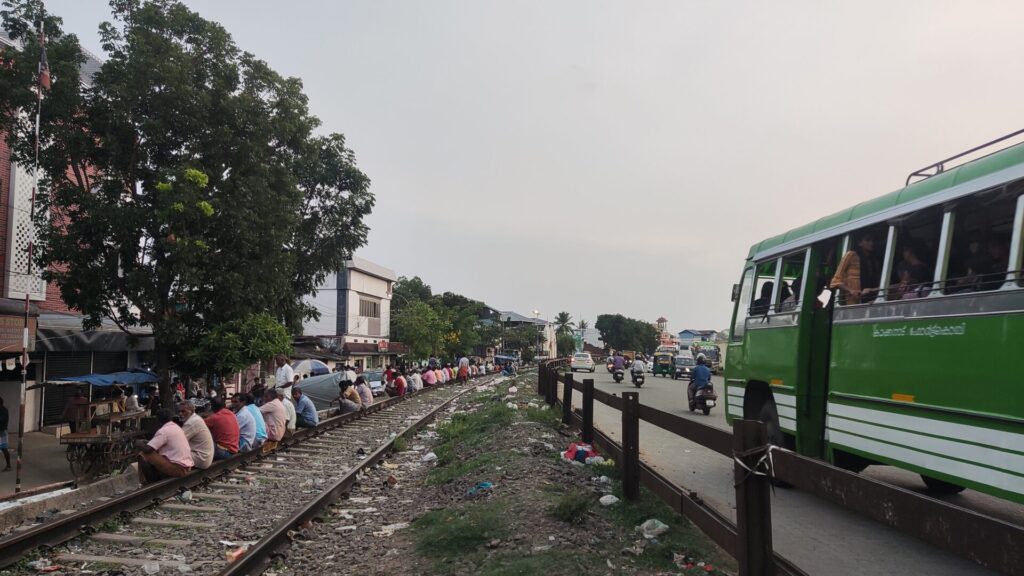
The Invisible Labour of Migrant Women in Kochi
/
Written by Ambuja Raj (CLAPs, IIHS)
Edited by Sofia Juliet Rajan (CLAPs, IIHS)
“Look inside, what we live inside is barely even a room. You really think cleaning this is work?”
— A migrant waste-picker in Pathadipalam, Kochi
Inside a one-room home in Kochi, a woman fans the flames on a chulha (earthern stove) while kneading dough, a toddler clinging to her hip. Her hands are never still. They are flipping hot rotis, pounding clothes on a stone, hanging them to dry, repeating each motion 10 or 12 times a day. Often another child underfoot, within her arm’s reach.
This scene repeated across migrant settlements in Ernakulam, capturing a rhythm that is deeply physical and quietly exhausting. And yet, most of this labour, both paid and unpaid, remains invisible
Migrant women are invisible, not just in statistical representation of their greater contribution to the economy than male migrants, but also in their everyday roles in the social reproduction of the migrant household. From unpaid care work to the lowest-paid factory jobs, their labour is unacknowledged. The work they do, for survival and livelihood, and the care-oriented labour which many hesitate to call “work” (including the women themselves), leaves a lasting imprint on their bodies and their lives. It is impossible to catalogue the many ways in which migrant women are exploited, disciplined, and erased, within what is increasingly referred to as the “feminisation” of labour.[1] Among the most sinister aspects of this gendered vulnerability is the unrecognition of care work and the systematic denial of their basic health requirements.
These insights come from field visits in Ernakulam (September 2024–April 2025), profiling migrant settlements and interviewing nearly 70 migrant workers from Assam, West Bengal, Odisha, Uttar Pradesh and Bihar. Focused on examining climate vulnerability and adaptation, the data highlights how systemic deprivation intersects with livelihood type, caste, and gender. I observed that women’s presence was always tinged with relatable subtexts—negotiating domesticity, subverting social norms, and reminiscing about girlhood. Women spoke about their loneliness, joked about the lack of clean toilets, complained, often matter-of-factly, about neglectful husbands, and shrugged off incidents like fainting from heat.

Credit: Ambuja Raj, IIHS
Full Shirts
Wage gaps are often steeper than what one would expect. In Perumbavoor, women in plywood factories are paid INR 300-350 for a day’s work, nearly half of what men earn (INR 600 and above). Women peel, press, glue, and fold wood, all of which are perceived as less labour-intensive than cutting, cleaving and loading/unloading of the timber, done by men. Some women saw the pay gap as fair: “The pay is according to the work. We do less heavy work, so we get paid less.”
Most women wore full-sleeved men’s shirts, a seemingly incompatible and formal attire for the job, but protected them from wood splinters. By way of protective gear, this is all that was there, apart from the occasional pair of gloves. No masks for the formaldehyde fumes from the glue, no glasses to prevent the splinters from getting into the eyes.
“Clogged sweat glands from the dusty, particulate air cause skin rashes in both men and women”, says a doctor who treats migrants through the healthcare programme of the Centre for Migration and Inclusive Development (CMID).[2]
Forty-year-old Mashima (name changed), who works as a peeler, has had chronic skin rashes for years. “I’ve had it for years. It never goes away. It’s on my face, since everything else is covered.”
Good Smoke
The women carry these bodily burdens into their living spaces. Spare plywood from factories are stacked neatly in every corner, to be used as firewood for the chulhas. In migrant households with women, they do all the cooking. “The smoke from the chulha does not bother us. It is good smoke, from good-quality wood.” Many women tell me this, unaware that this “good smoke” becomes one of the many invisible contributors to poor health.
Factory emissions and chulha smoke together degrade lung health. Women, due to longer exposure, are at higher risk of chronic respiratory illnesses, according to CMID doctors.
Environmental vulnerability interferes with both the health of migrant women, and their ability to provide care. Environmental stressors like heat, poor air quality, or lack of access to water and sanitation impact their health and care work. Anaemia and skin issues worsen with heat. Constant exposure to smoke impacts lung capacity

Sea Breeze
Long working hours and constant deadlines leave migrant women juggling factory jobs and housework with no real rest. CMID doctors report anaemia and gastric issues among women due to skipped meals and chronic fatigue.
Even spaces of leisure are mostly taken up by men. Vathuruthy, Kochi’s oldest Tamil migrant settlement, lies beside a railway track, largely defunct except for the rare freight train. In the evenings, after workers return from construction jobs, the men (and occasionally goats) occupy the tracks. The men chat, smoke, and sometimes drink, relishing the cool sea breeze from the distant port.

The women stay back in their rooms, labouring over hot stoves inside constricted spaces, after a day of mixing cement with bare hands and feet. While the men’s days are divided between work and leisure, the women’s day is divided between work and care-work. For the migrant woman, home is not a space of recovery, but an extension of work. Over time, the only consequence of this bodily overuse is its eventual inability to work, produce, care, or even sustain itself.
In her book, Depletion: The Human Cost of Care, Shirin Rai discusses the slow erosion of the caring body under social, economic and ecological crises, often offered with full consent, and even eliciting joy.
The only ways to reverse depletion are, first, recognition of this work as universal and local, with long histories reinforcing it, and second, through radical reimaginings of what an economy of care may look like. We need structural changes: regular health screenings for migrant women, better working conditions and wages, and gender-sensitive planning in worker housing.
The migrant woman’s body is a site of labour, maternity, caregiving and social reproduction. Her health, wellness and happiness depend on her ability to negotiate her income, working hours, living conditions, and domestic life. Care work is both an offering and an expectation. To restore balance, we must de-romanticise care work, detach it from the domestic sphere, and integrate it into frameworks of labour, health, and well-being.
Further Reading
- Rai, Shirin (2024) Depletion – The Human Cost of Caring. Oxford: Oxford University Press. Accessed https://global.oup.com/academic/product/depletion-9780197777725?cc=in&lang=en&.
- Raina, Ahana, and Ruchira Ghosh. “A Blurred Mapping of Internal Female Migration.” The Hindu, January 30, 2024, sec. Comment. https://www.thehindu.com/opinion/op-ed/a-blurred-mapping-of-internal-female-migration/article67793617.ece.
- Shekhar, Vedeika. “The Invisible Majority.” The Indian Express, May 23, 2018. https://indianexpress.com/article/opinion/columns/the-invisible-majority-women-urban-migrant-workers-5185862/.
- Vivek, Vipul. “Women Migrate For Work At Double The Rate That Men Do.” Indiaspend, July 25, 2017. https://www.indiaspend.com/women-migrate-for-work-at-double-the-rate-that-men-do-93512/.
[1] CMID, under the National Health Mission, operates mobile clinics that visit densely populated migrant settlements in Kochi and Perumbavoor. The clinic is equipped with all the clinical equipment and medication available in Public Health Centres, and has a doctor and a nurse. The mobile clinic visits both factories and residential areas.
[2] The ‘feminisation of labour’ is a concept used to understand the phenomenon of increasing participation of women in the labour force, especially in previously male-dominated fields, often paired with worsening working conditions and lower wage-rates.

